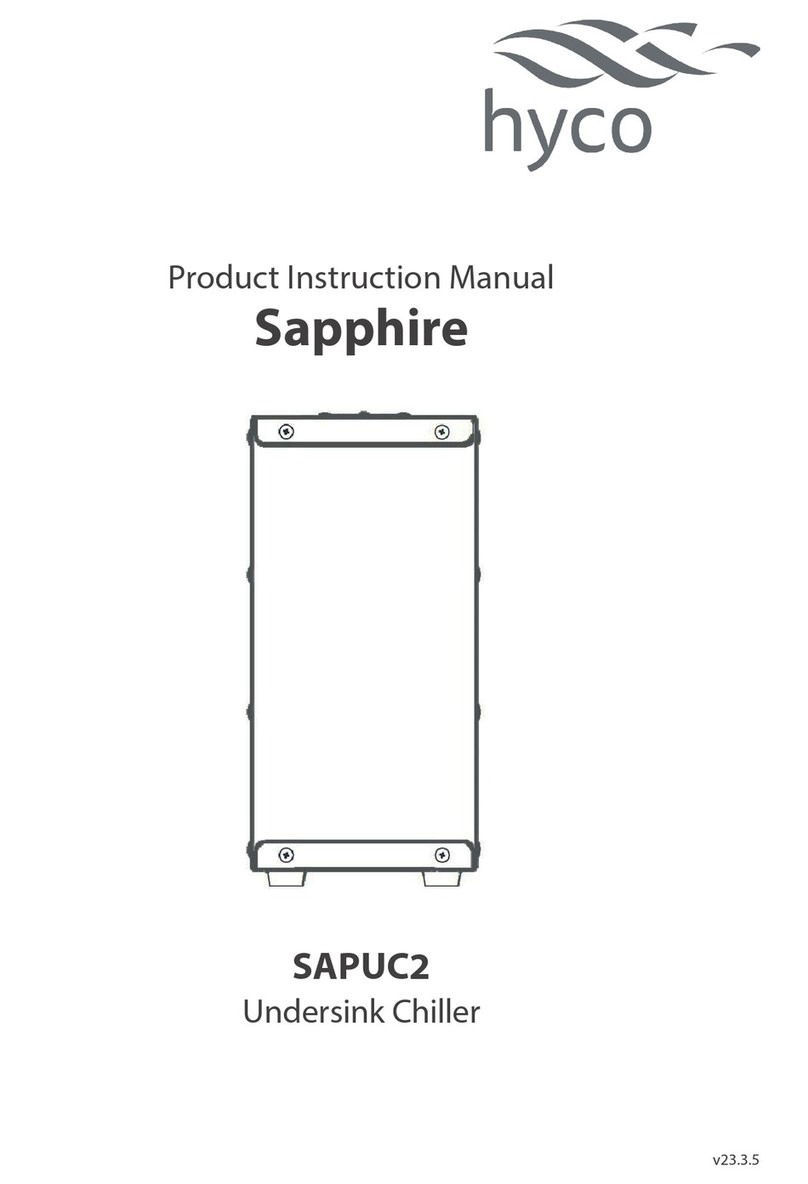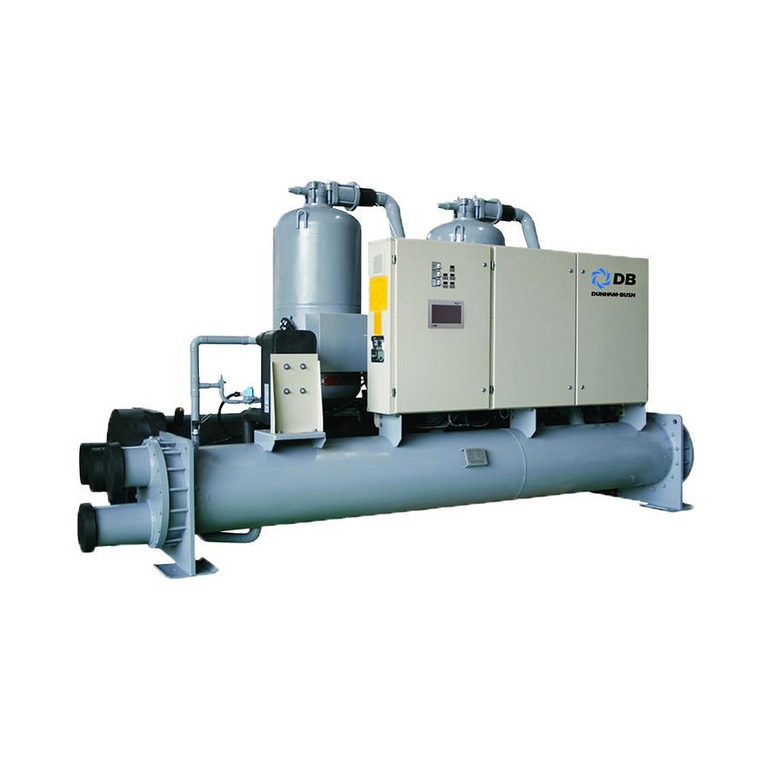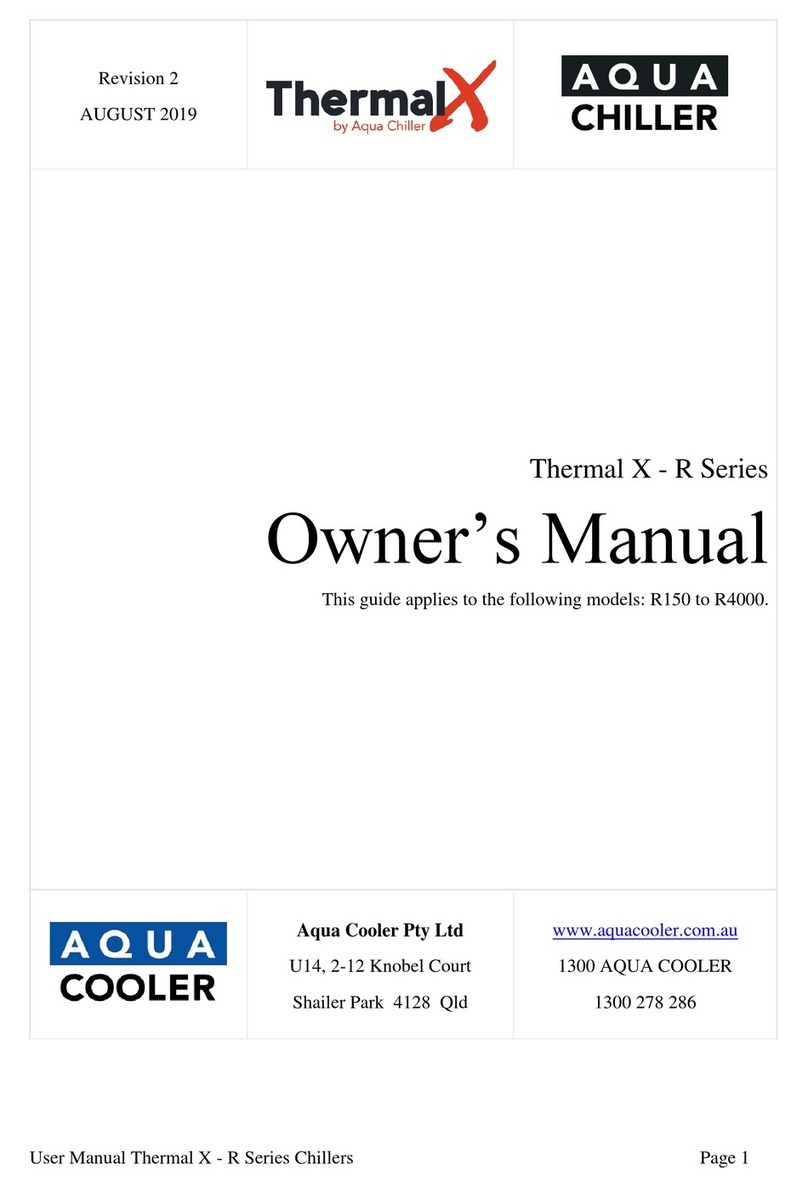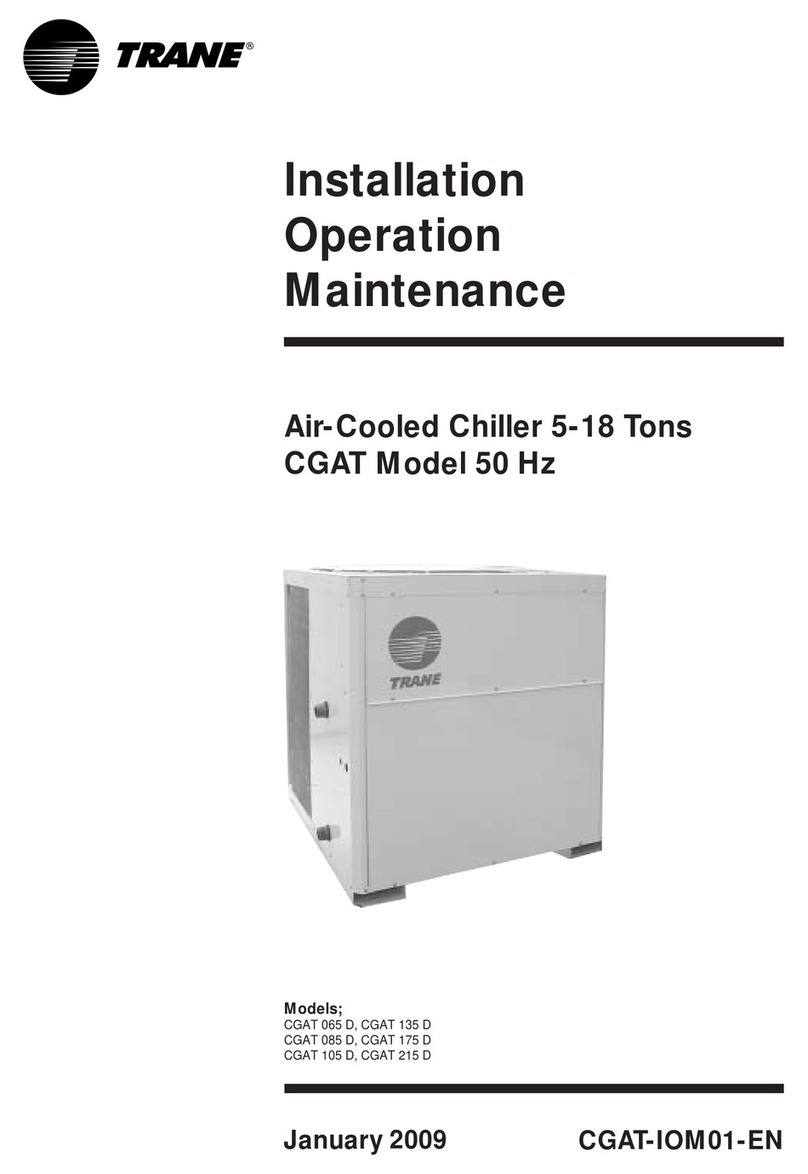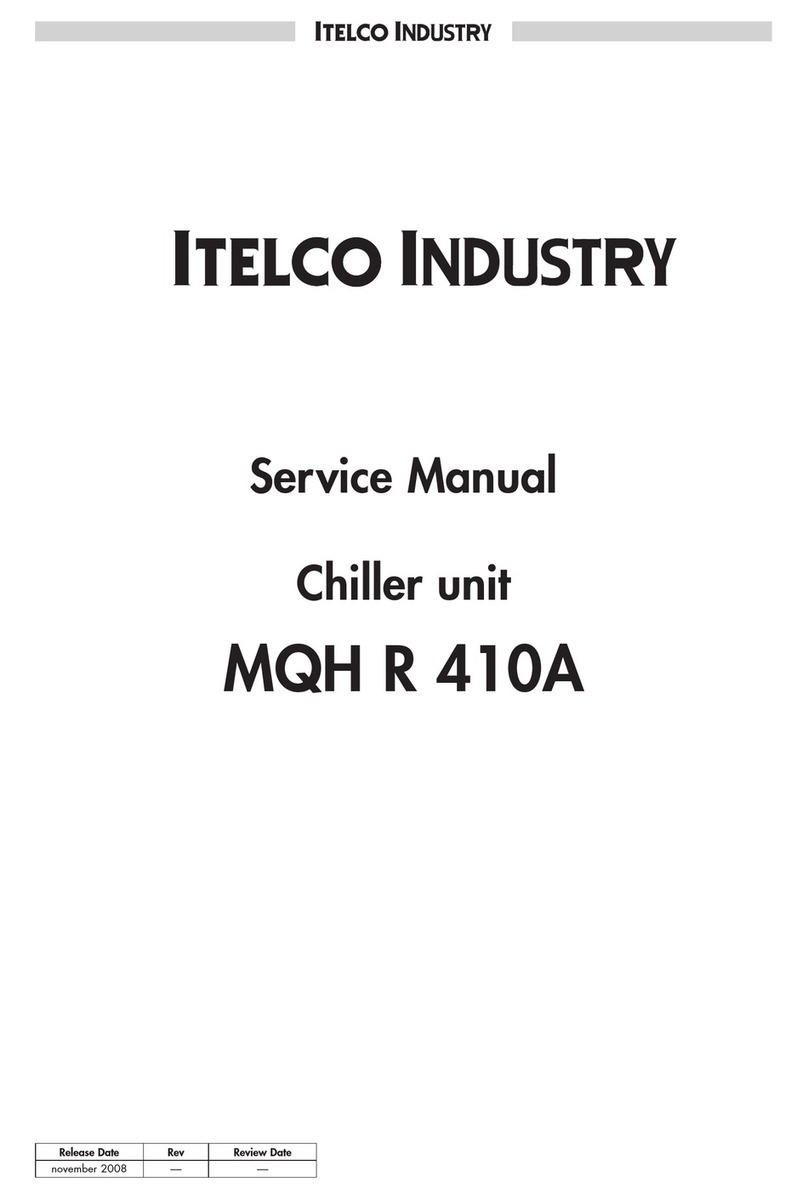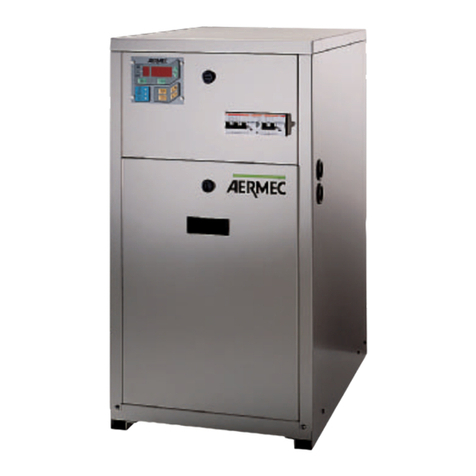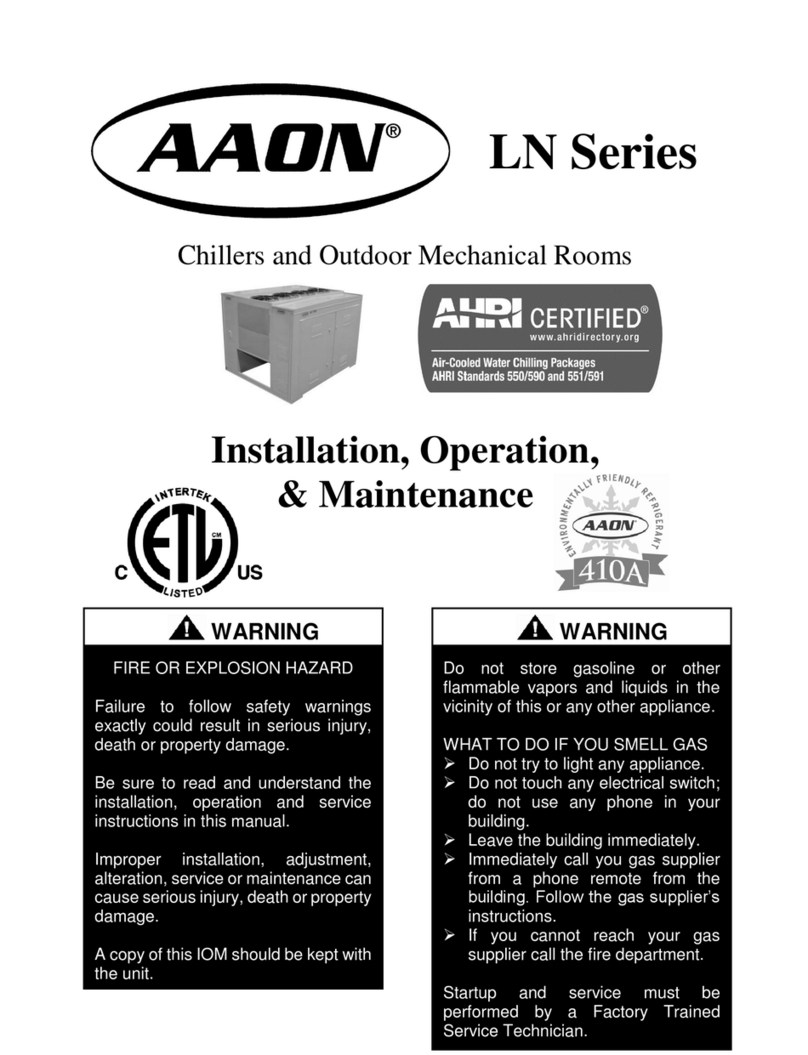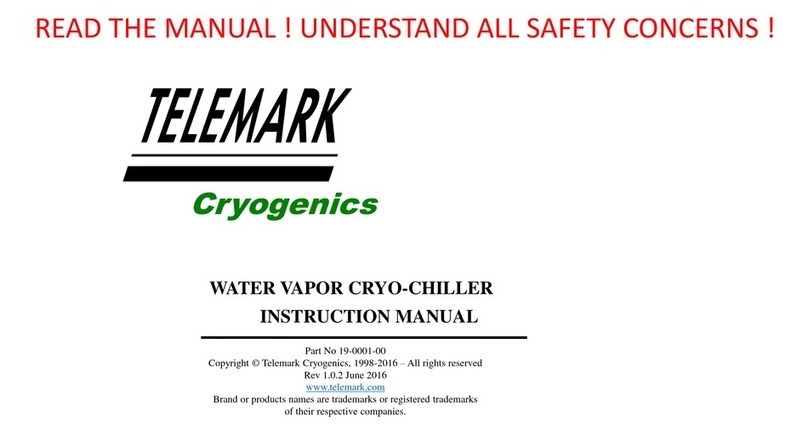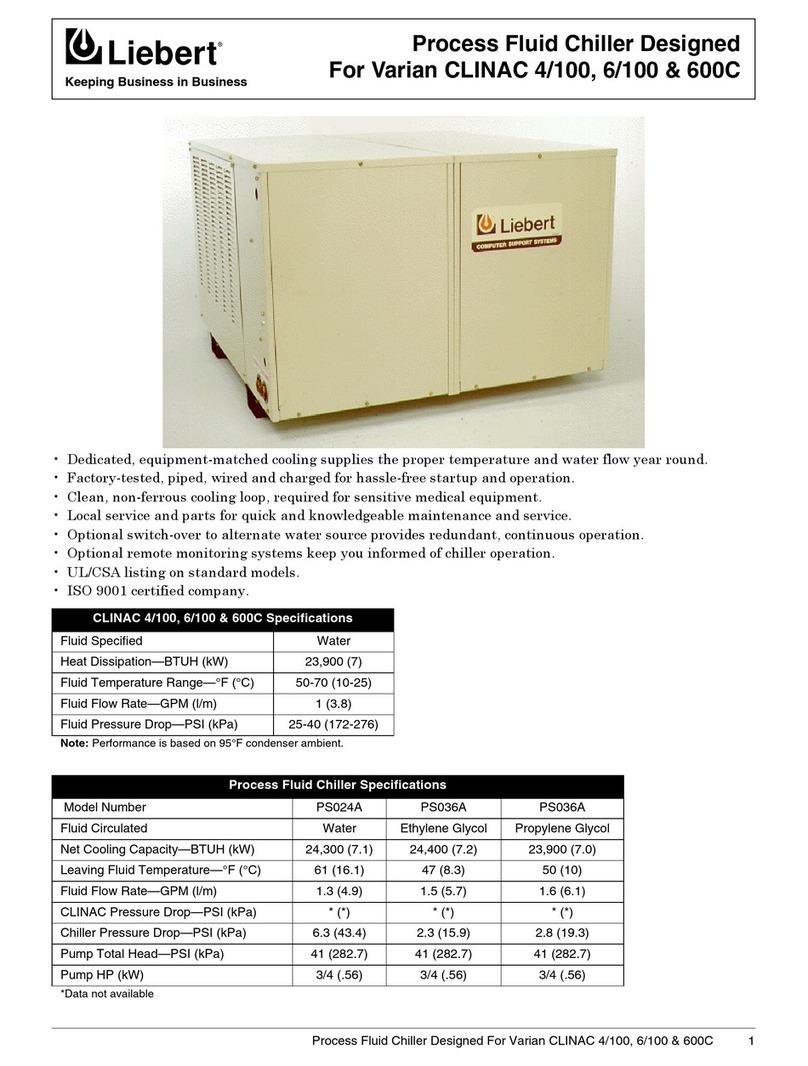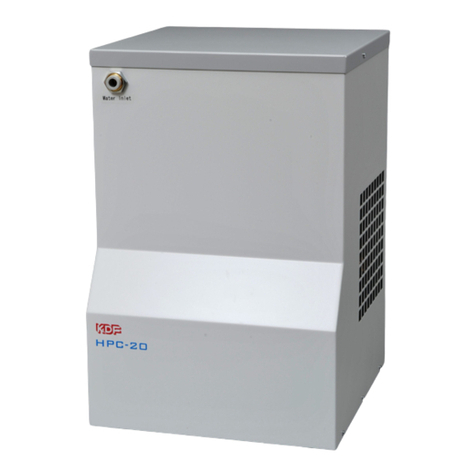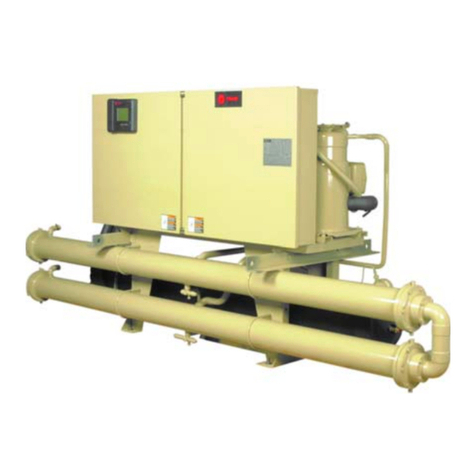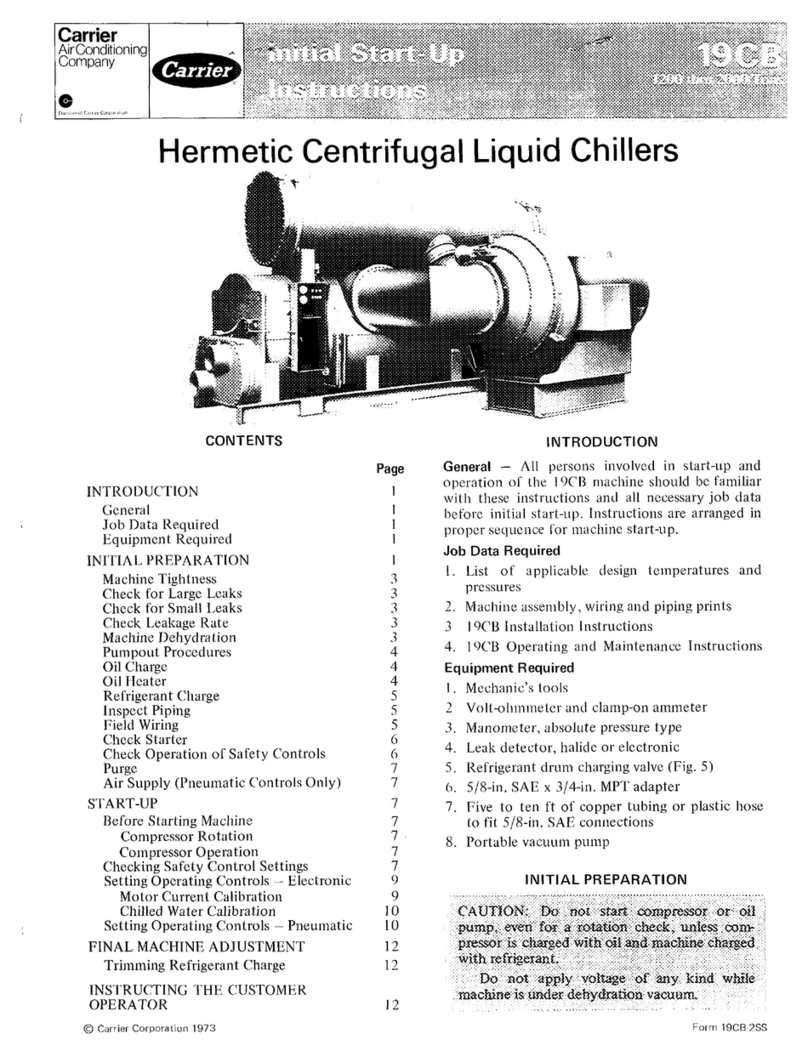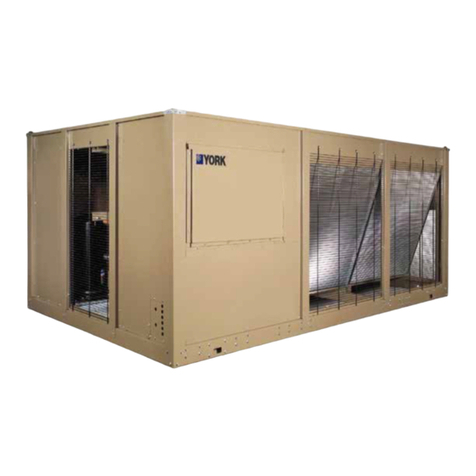1.0 GENERAL INFORMATION AND SAFETY
Analysis of residual risks
The manufacturer has made a precise analysis of the risks during the whole design and engineering phase of the product. However, despite the
careful design choices and targeted technical measures implemented, a few remaining residual risks should be taken into consideration.
Consequently, below is a list of the main residual risks and possible preventive action to be implemented.
-MECHANICAL RISKS: None, as all of the moving parts are protected by casing or grills.
-ELECTRICAL RISKS: None, as operations on the electrical panel may only be carried out by qualified and authorised personnel according
to the regulation and danger signs shown on the panel, which can only be opened using a special key with the main switch in the “OFF”
position.
-THERMAL RISKS:
▪Risk of burns (MEDIUM): on the chiller, the refrigerant reaches extremely high temperatures and pressures. The sections of
the circuit that are particularly critical for the risk of burns have been positioned to reduce the possibility of accidental contact
with these sections to a minimum. Other areas have been especially insulated and protected with special material. The
condensing coils can also reach very high temperatures.
This risk can be reduced by wearing appropriate clothing such as a work overall and gloves, which are suitable for the area
where the unit is installed.
▪Risk of inhalation and burns (LOW): the chiller is fitted with safety valves, which are activated automatically in the event of
pressure inside the refrigerant circuit exceeding a set threshold caused by anomalies or faults. When the threshold is
exceeded, the valve releases a quantity of gas at high pressure and temperatures into the atmosphere. Remember that the
activation of these devices is a rare but serious event, as it indicates a problem with the machine. Consequently, the valves
have been positioned to avoid being hit directly by the discharge jet.
One way of preventing and partially reducing the potential consequences consists of wearing appropriate clothing, such as
work overalls and gloves, which are suitable for the area where the unit is installed. An alternative way of mitigating this risk
consists of installing additional elements that can direct (in keeping with the technical requirements of the aforesaid valve)
the gas released into an area that is safe or separate from places, which might be occupied by workers.
-DANGERS FROM NOISE OR VIBRATIONS: None.
-DANGERS FROM HARMFUL SOURCES (electricity, static electricity, magnetic fields, radiation, lasers etc.): None
-OTHER SOURCES HARMFUL TO HEALTH (dust, gases, water, steam, fluids, mists, smoke, fire explosion, biological and microbiological
substances, chemical etc.): None
-ERGONOMIC RISKS (safety distances, ergonomic sizes and geometries, etc.):
▪Risk of cuts (MEDIUM): the chiller is an assembly of mechanical parts made of metal; consequently, there is a risk of cuts or
minor injuries caused by these parts (especially by the wings that make up the condensing coil). In order to reduce the
possibility of accidental contact with the parts to a minimum, you are strongly advised to wear appropriate clothing, such as
work overalls and gloves, which are suitable for the area where the unit is installed.
▪No other risks identified, provided the instructions and provisions relating to installation of the chiller, set out in this manual,
are complied with.
Personal protective equipment PPE
All workers involved in activities carried out near the chiller (whether the manufacturer’s technicians or a third parties) must be equipped with
appropriate personal protective equipment (PPE). The PPE used must comply with the national standards of reference and be in a good condition.
Damaged, worn or unfit PPE does not guarantee the requested and desired level of safety.
The following PPE represents the minimum compulsory equipment:
-Protective gloves, according to the specific risks, for example: welding, electrical risk, cut protection.
-Safety shoes
-Work clothes, according to the specific risks, for example: welding, electrical repairs, painting.
-Safety helmet, in the event of having to carry out activities involving the handling of suspended loads or activities involving
the need to work at a raised height from the ground.
-Harnesses or safety belts, in the event of having to carry out activities involving the need to work at raised height from the
ground.
-Acoustic protection devices (earphones or earplugs), in the event of having to carry out activities with the machine in
operation where noise levels exceed the maximum exposure requirements with reference to the national regulations.
-Protective eyewear, in the event of having to carry out activities, such as paining and welding.
-All other safety equipment required according to the risk evaluation developed by the subcontractors.
It is recommended that the compulsory safety devices (PPE) are identified correctly and indicated in these areas.





















